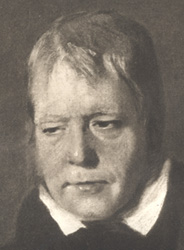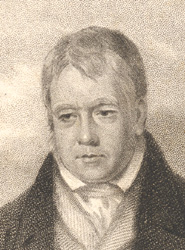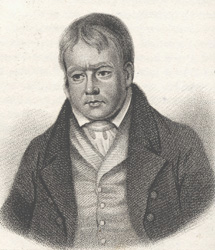|
|
Home | Corson
Collection | Biography | Works | Image
Collection | Recent
Publications | Correspondence | Forthcoming
Events | Links | E-texts | Contact
Andrew Geddes's Portrait of Sir Walter
Scott (1818)
In 1818, Andrew
Geddes painted a remarkably penetrating likeness of
Scott. The quarter-length oil portrait, measuring 21½ by
16½ inches, depicts the writer almost in full face
looking downwards. Originally purchased by the collector
Sir James Stuart, 7th Baronet of Allanbank, the picture
now hangs in the Scottish
National Portrait Gallery. Click on the thumbnail,
right, to see a photogravure of the original painting.
The 1818 portrait began life as a study for Geddes's The
Discovery of the Regalia of Scotland, where Scott
was to figure among the Commissioners charged with unearthing
the Regalia. Scott does not mention the sitting in his
correspondence, and no other record of it appears to exist.
It must, however, have taken place between 4 February 1818,
the date of the discovery of the regalia, and the beginning
of 1819 when Scott fell seriously ill. The portrait suggests
that Scott's health is already deteriorating. |
|
In 1823, Geddes made a drawing from the portrait, also held by
the Scottish National Portrait Gallery, so that it could be engraved
by F.C. Lewis. Edinburgh University Library does not hold a copy
of Lewis's engraving (1824), but see below
for subsequent engravings by Thomas
Woolnoth and John Hawkesworth (1825)
and W.
Read (1828).
|
Click on the thumbnails to see full-size images of engravings
of Geddes's portrait of Scott by Thomas Woolnoth and John Hawkesworth
(left) and William Read (right). |
|
Bibliography
- Russell, Francis. Portraits
of Sir Walter Scott: A Study of Romantic Portraiture (London:
The Author, 1987)
In addition to
the above sources, this page draws on unpublished research
by James C. Corson, who discovered the engravings by Woolnoth
and Hawkesworth and William Read, which Russell does not mention
Back
to Index

Last updated: 12-Sept-2005
© Edinburgh University Library
|
|




